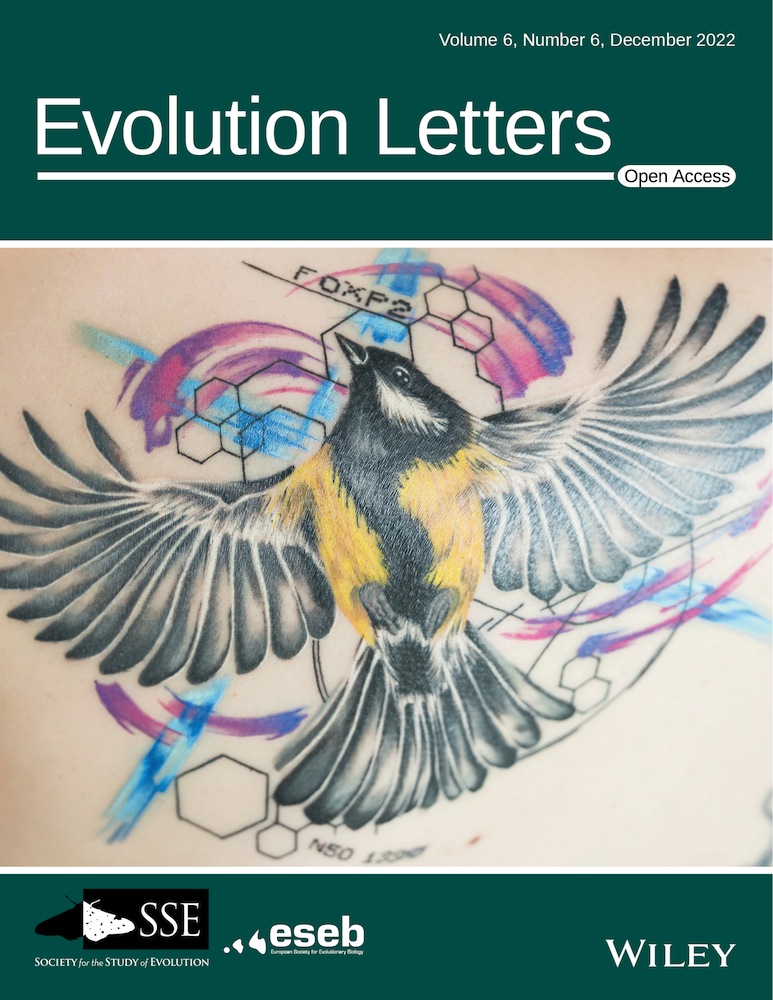有害突变灾难性积累下的衰老演化
IF 3.7
1区 生物学
Q2 EVOLUTIONARY BIOLOGY
引用次数: 0
摘要
要使衰老得以进化,针对死亡率的选择必须随着年龄的增长而减少。衰老进化理论中的这一主流观点认为,在生命晚期,当肃清选择较弱时,具有有害影响的突变可能会通过生殖系中的遗传漂移而固定下来,并产生衰老表型。然而,该理论主要关注的是不断增长的种群和单个有害突变的命运。在一个数学模型中,我们证明放宽这两个简化假设会导致不切实际的结果。在受密度调节的种群中,先前固定的有害突变应促进其他有害突变的固定,从而导致衰老的年龄越来越小,直到性成熟时死亡。这种有害突变的连续固定并不是由于种群数量的减少,而是由于选择强度的变化。在一个以个体为基础的模型中,我们还证明这种进化动态应导致大多数种群的灭绝。因此,我们的模型做出了相当不现实的预测,强调了重新评估当前理论的必要性。在这方面,我们在模型中进一步假定,突变的有害影响只能发生在特定的年龄段,例如以躯体或生理变化为标志的年龄段。在这种情况下,我们证明有害突变在种系中的灾难性积累可以停止。这一新发现强调了研究体细胞因素以及突变有害效应的其他机制对于理解衰老进化的重要性。因此,从更广泛的意义上讲,我们的模型确定了自然界的衰老模式不仅取决于随着年龄的增长选择强度的降低,还取决于阻止突变灾难性积累的任何机制。本文章由计算机程序翻译,如有差异,请以英文原文为准。
Senescence evolution under the catastrophic accumulation of deleterious mutations
For aging to evolve, selection against mortality must decrease with age. This prevailing view in the evolutionary theory of senescence posits that mutations with deleterious effects happening late in life—when purging selection is weak—may become fixed via genetic drift in the germline, and produce a senescent phenotype. Theory, however, has focused primarily on growing populations and the fate of single deleterious mutations. In a mathematical model, we demonstrate that relaxing both of these simplifying assumptions leads to unrealistic outcomes. In density-regulated populations, previously fixed deleterious mutations should promote the fixation of other deleterious mutations that lead to senescence at ever younger ages, until death necessarily occurs at sexual maturity. This sequential fixation of deleterious mutations is not promoted by a decrease in population size, but is due to a change in the strength of selection. In an individual-based model, we also show that such evolutionary dynamics should lead to the extinction of most populations. Our models therefore make rather unrealistic predictions, underlining the need for a reappraisal of current theories. In this respect, we have further assumed in our models that the deleterious effects of mutations can only occur at certain ages, marked, for instance, by somatic or physiological changes. Under this condition, we show that the catastrophic accumulation of deleterious mutations in the germline can stop. This new finding emphasizes the importance of investigating somatic factors, as well as other mechanisms underlying the deleterious effects of mutations, to understand senescence evolution. More generally, our model therefore establishes that patterns of senescence in nature depend not only on the decrease in selection strength with age but also on any mechanism that stops the catastrophic accumulation of mutations.
求助全文
通过发布文献求助,成功后即可免费获取论文全文。
去求助
来源期刊

Evolution Letters
EVOLUTIONARY BIOLOGY-
CiteScore
13.00
自引率
2.00%
发文量
35
审稿时长
10 weeks
期刊介绍:
Evolution Letters publishes cutting-edge new research in all areas of Evolutionary Biology.
Available exclusively online, and entirely open access, Evolution Letters consists of Letters - original pieces of research which form the bulk of papers - and Comments and Opinion - a forum for highlighting timely new research ideas for the evolutionary community.
 求助内容:
求助内容: 应助结果提醒方式:
应助结果提醒方式:


